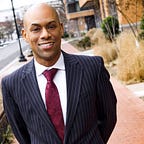My Ancestral Pilgrimage to Bertie County, NC
My maternal Biggs ancestors were from Bertie County, North Carolina. Here is a travelogue of my first trip to Bertie on Saturday July14, 2018.
I started my drive to Bertie from Suffolk, Virginia, my mother’s hometown, and where my aunt and uncle, who still live there, graciously hosted me for the weekend. The distance from Suffolk to Bertie is an enjoyable hour by car on a sunny day. It’s a straight shot down US-13. As I drove, I imagined what this trip might have been like for my ancestors. They made this trip once, but in reverse, from rural Bertie to urban Suffolk post-civil war in search of a new life and job opportunities. My guess is that they travelled on horses, and that it likely took the better part of a day, quite a contrast to my leisurely, hour long car ride.
My first stop was to the Roanoke-Chowan Heritage Center on the grounds of the Hope Plantation in Bertie to attend the 8th annual family history and genealogy fair. The goal of the event, hosted by Dr. Benjamin F. Speller, Jr., former archivist, long-time preservationist, and the first North Carolina Central University Dean of Library Sciences, was to explore the diverse origins of Bertie County families.
The highlight of the Fair for me was a brilliant presentation by researcher Joyce Sharrock Cole, whose ancestors were enslaved in Bertie County and who migrated to New York after the Civil War. Joyce’s research is inspiring to me because through tenacious exploration of tax and deed records, she has been able to trace her enslaved Sharrock ancestors back to her 8th great grandparents back to around 1733. It’s extremely rare that an African American can trace their enslaved ancestry this far back. I was blown away.
I was inspired to visit Bertie by the memory of my maternal great-great grandfather Edward Biggs. He built his life and family in Suffolk, my mother’s birthplace, but was born in Bertie County, North Carolina around 1867 to a formerly enslaved mixed race woman, my third great grandmother, Sarah Anne Biggs and an unknown father.
Edwards mother, my third great grandmother Sarah Ann Biggs, was born enslaved around 1848 and post-emancipation became a teacher in Windsor, Bertie, NC from 1865–1870. By 1880 she’d moved to Suffolk, VA as a teacher. She was likely able to pursue teaching post-emancipation because as a “house slave” she learned how to read and write. From this she dedicated herself to teaching fellow formerly enslaved to read and write too.
Family oral history recorded Sarah’s mother as an enslaved woman named Frances “Frankie” Peele. But DNA clues, coupled with helpful research guidance from great friends, have helped me to clarify that Sarah was born to a mixed race woman named Clara and an unknown father (note the pattern). Clara, my fourth great grandmother, was born enslaved around 1827 in Bertie. She was originally owned by Godwin and Mariah Rhodes Cotten and was sold to Kader Biggs (whose wife was a Cotten) in 1844 for $1.
This 1870 Bertie County marriage record for Clara included a precious gift, the name of her mother — Winnie who is my fifth great grandmother. Additionally, Bertie County slave owner John Young, in his 1832 will, gives Winnie and all her increases, including children already born (which would have included Clara who was born around 1827) to Jane Laveney Cotten, mother-in-law to Kader Biggs.
Now back to the present and the Bertie Genealogy Fair. Around noon we moved to the center’s banquet hall and settled in for a lunch of fried fish, fried chicken, corn bread, cucumber salad and sweet tea. My lunch companions were my (Cumbo) Cousin Tracy and her family and fellow Washingtonian and researcher Mary Helen. Over our meals we enjoyed a conversation on genealogy, race, history, culture and travel.
After the Fair ended I took a tour led by Gregory Tyler of Bertie County ancestral locations. Gregory is a genealogist of immense talent and a leading authority on Bertie County genealogy and family history. She has been very generous with her time and expertise in helping me to uncover my family’s own story in Bertie. I am thankful to her for that. Here’s what she estimates may be the “Biggs tract” where my ancestral relatives lived in Kelford, Bertie, NC.
After my tour we retired to Gregory’s home for food and fellowship on her back porch. The discussion was lively and genealogy focused. Surname references flew with reckless abandon, challenging you to keep up. In many ways, we were engaged in the type of family history discussion I imagined happening on back porches across Bertie for hundreds of years, except for two unique features. One, our discussion featured technology — people pulling up and referencing online family trees from laptops and DNA results from mobile phones. Two, our conversation brought together the descendants of Bertie enslaved and slave owners, to discuss our shared history, which was a powerful thing to experience. As Americans I am convinced that we need more discussions like this. This is the path to our truth and reconciliation as an American people.
I left Bertie that evening back for DC feeling good and inspired to continue researching my Bertie ancestors. Success in genealogy starts with setting goals. So on my drive home I formulated a few new research goals. I want to better understand what life was like for those enslaved by Kader Biggs. I want to uncover the story behind why my third great grandmother Clara was sold for only one dollar. I also hope to follow the lead of Joyce Cole and leverage deed and tax records to extend my tree back a few additional generations beyond my fifth great grandmother Winnie. Who knows, maybe next year I’ll be heading back to the Bertie Genealogy Fair to share my story.
